The Future of Telemed Services: Emerging Trends and Technologies

Telemed Services: The Rise of Artificial Intelligence in Healthcare
Telemed services are at the intersection of healthcare and technology, which continues to evolve at an incredible pace. Ongoing innovations in tele-ICU care, artificial intelligence (AI), and machine learning have hospital administrators exploring how these new technological evolutions can increase efficiencies and improve patient care.
Both tele-ICU systems and AI are primed to reshape the way hospitals across the United States, especially those in rural communities, manage patient care. With efficiency and cost-savings at the core of technological advancements, overworked hospital networks are now able to do much more, with much less.
The incredible capabilities of tele-ICU systems and AI give healthcare facilities access to the largest database of ICU stays and predictive analytics in the world, allowing for enhanced, lifesaving proactive care. And with advanced reporting and data visualization, emerging technologies are generating clinically meaningful results that promise to reshape the face of healthcare.
The Rise of Artificial Intelligence In Healthcare
In recent years, Artificial Intelligence has been dazzling tech enthusiasts, not only with its easy use and practical application, but also with its incredible market size, which is predicted to grow to $407 billion by 2027.1 It’s impossible to ignore this technological revolution that is set to transform many different industries, including healthcare.
Recently, Palantir reported that healthcare entities generated 10 percent of its software revenues; Palantir developed AI-powered software designed to help nursing staff predict flows of patients heading in and out of their emergency rooms. The Cleveland Clinic has also embraced the power of AI, with the software platform correctly predicting the discharges expected in a day, ensuring their emergency room could handle a sudden surge of new patient arrivals.2
Effectively monitoring the patient flow has historically required hour-by-hour communication between nurses, but with AI, the software saved the hospital’s workforce precious time as they prepared for the upcoming surge of new patients. In the understaffed healthcare space, having the visibility to optimize and allocate resources at precisely the right time is invaluable, especially as one minute may be the difference between life and death.
Easing The Burden of Decision Making
Tele-critical care is uniquely positioned to take advantage of the AI revolution. The current state of AI is in its infancy, but may be paired with the tele-ICU systems that are already in place at many rural healthcare networks across the U.S.
Imagine a continuous feed of vital signs, lab data, and other clinical parameters being fed into an AI platform that can accurately predict the risk of death or readmission of a patient in emergency care, all collected in a completely virtual setting.
The machine learning capabilities of AI help optimize hospital systems operations by taking away time-consuming, repetitive tasks and difficult decision-making, which is estimated to be approximately 100 decisions each day. These platforms are designed to adapt, optimize and improve over time, continuously improving workflow efficiencies to support their healthcare facilities.
Now, nurses can recognize variables that could unexpectedly result in ICU mortality, and quickly identify which patients need to be administered to an ICU bed, step-down status, or transferred to another facility entirely. The endless ICU-related decisions that have slowed the productivity of hospital workforces for years can be taken on by AI, helping reducing burnout and even achieving significant cost savings for the healthcare facility.3
In 2022, the University of Pennsylvania researchers published their development of a patient-tailored ICU electrolyte replacement policy with machine learning technology. Researchers tested the policy on a computerized database of de-identified ICU patients, finding that compared to traditional physician management, the computerized algorithm reduced unnecessary electrolyte replacements, identifying patients who needed to be shifted to oral administration versus the intravenous route. The end result was positive for patients and a significant cost-saving achievement for the hospital.4
Collect, Curate, and Chat: Tap Into Patient Information
Clinical text message platforms have been used for years across many hospital networks, but their integration with AI-powered chatbots presents unique opportunities.
In a healthcare setting with tele-ICU systems already in place, AI chatbots could curate relevant patient information from several different sources, such as electronic health records. Bedside staff can even supplement the information being gathered by answering preset questions, while AI does the time-consuming work of synthesizing a synopsis and then presenting the results to a tele-critical care provider for final intervention.5
The potential synergy between artificial intelligence, bedside providers, and tele-critical providers can further the goal of providing every critically ill patient in the United States with the gold standard of ICU care, which includes proactive 24/7 patient monitoring, diagnosis, treatment, and crisis support. With these technological innovations in place, hospitals can ensure that their own staff is well-rested, therefore providing an improved work-life balance, and ultimately helping to retain existing talent and help recruitment efforts for the long term.
Is History Set to Repeat Itself?
For technologically advanced hospitals, efficiency is at the forefront, whether for improved documentation, patient billing, or improved patient flow. AI is a valuable tool to support these goals, but one that must be judiciously developed and carefully used.
The hype surrounding AI may be compared to that which preceded the widespread adoption of electronic health records (EHRs). While EHRs have many benefits, including improved legibility, greater patient safety, and easy access to patient information, it has also resulted in alert fatigue, data overload, and the burden of increased documentation.6 Just as EHRs aren’t a complete remedy for all of the challenges faced by hospital networks, the forthcoming AI revolution in healthcare won’t be a complete panacea, either. For the AI revolution to be successful, it will need to unfold in a patient-first, human-centric way, alongside the advancements in tele-critical care services.
Tele-ICU services are the perfect complement to AI, as it removes bottlenecks of staff and paperwork, streamlining the ICU workforce to serve more patients, faster. Providers at the cutting-edge of tele-critical care, such as Intercept Telehealth, are committed to improving the way tele-ICU services work in concert with AI and bedside hospital teams to improve the efficiency and quality of patient care.
References
1 – Haan, Kathy. “24 Top AI Statistics and Trends in 2023.” Forbes, Forbes Magazine, 8 Aug. 2023, www.forbes.com/advisor/business/ai-statistics/.
2 – Capoot, Ashley. “How Palantir Is Helping Hospitals with Tasks That Used to Require Spreadsheets and Whiteboards.” CNBC, CNBC, 22 June 2023, www.cnbc.com/2023/06/17/palantir-hospital-operations-platform-accounts-for-10percent-of-revenue.html.
3 – McKenzie M.S., Auriemma C.L., Olenik J., Cooney E., Gabler N.B., Halpern S.D. An Observational Study of Decision Making by Medical Intensivists. Crit. Care Med. 2015;43:1660–1668. doi: 10.1097/CCM.0000000000001084.) (Kuziemsky C. Decision-making in healthcare as a complex adaptive system. Healthc. Manag. Forum. 2016;29:4–7. doi: 10.1177/0840470415614842.
4 – Prasad N, Mandyam A, Chivers C, Draugelis M, Hanson CW 3rd, Engelhardt BE, Laudanski K. Guiding Efficient, Effective, and Patient-Oriented Electrolyte Replacement in Critical Care: An Artificial Intelligence Reinforcement Learning Approach. J Pers Med. 2022 Apr 20;12(5):661. doi: 10.3390/jpm12050661. PMID: 35629084; PMCID: PMC9143326.
5 – Haug CJ, Drazen JM. Artificial Intelligence and Machine Learning in Clinical Medicine, 2023. N Engl J Med. 2023 Mar 30;388(13):1201-1208. doi: 10.1056/NEJMra2302038. PMID: 36988595.
6 – Colicchio TK, Cimino JJ, Del Fiol G. Unintended Consequences of Nationwide Electronic Health Record Adoption: Challenges and Opportunities in the Post-Meaningful Use Era. J Med Internet Res. 2019 Jun 3;21(6):e13313. doi: 10.2196/13313. PMID: 31162125; PMCID: PMC6682280.



